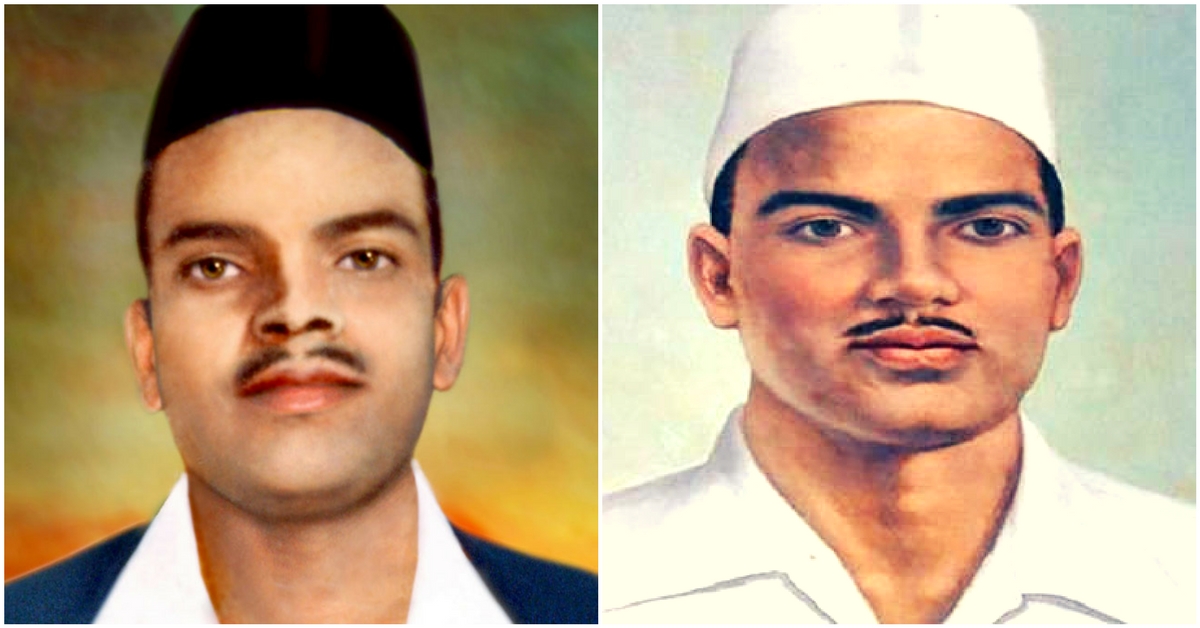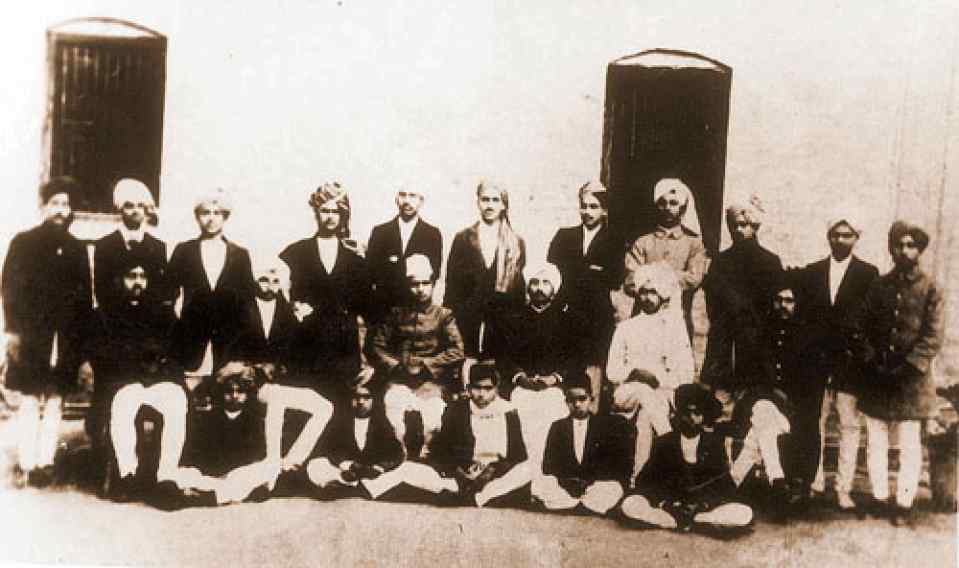Shivaram Rajguru and Sukhdev Thapar: The Forgotten Men Who Shook Up The British Raj
Along with Bhagat Singh, the two freedom fighters struck fear into the heart of the British empire and infused fresh energy into India’s anti-colonial fight.

Nearly eighty-seven years ago, on March 23, 1931, Bhagat Singh, Shivaram Rajguru and Sukhdev Thapar marched to the gallows of Lahore Jail with smiles on their faces and “Inquilab Zindabad” on their lips.
Executed for their roles in the Lahore Conspiracy Case, each member of the trio had been equally instrumental in infusing fresh energy into the fight against the British Raj. Yet, in the years since Independence, Bhagat Singh’s fame seems to have eclipsed the heroics of his compatriots Rajguru and Sukhdev.
Here are the forgotten stories of the two freedom fighters who streaked like blazing meteors across the anti-colonial nationalist sky.

Photo Source: Shivaram Rajguru (left) and Sukhdev Thapar (right)
Sukhdev Thapar
Born on May 15, 1907 in Ludhiana’s Naughara Mohalla to Ramlal Thapar and Ralli Devi, Sukhdev Thapar was brought up by his uncle Lala Achintram after his father’s death. The young lad grew up witnessing the brutal atrocities that Britain’s colonial rule kept inflicting on India.
As a young student at Lahore’s National College, he started study circles to delve into India’s past and scrutinize the revolutionary movements happening around the world. Founded by Lala Lajpat Rai, it was at this college that he first met Bhagat Singh and Yashpal.

Interestingly, the students of National College, particularly Bhagat Singh and Sukhdev, were initiated into a deep love for India by Lala Lajpat Rai himself and into revolutionary ideals by historian and professor Jai Chand Vidyalankar.
Together, the group of friends founded the Naujawan Bharat Sabha with the aim of encouraging youth to join the freedom struggle, inculcate a rational scientific attitude, and end the social evils of communalism and untouchability.
They also began inviting various political personalities to speak about British colonialism and independence for India. These efforts and access to those at the forefront of the Indian freedom struggle catapulted Sukhdev, Bhagat Singh and others to the status of national political figures.
As a member of the Hindustan Socialist Republican Association (HSRA), he began organising revolutionary cells in Punjab and other areas of North India, vowing to set India free from the shackles of British rule.
He also played an active role in several revolutionary activities but he is best remembered for his courageous attack in the Lahore Conspiracy Case.
Also Read: The Untold Story of The Freedom Fighter Who Avenged the Jallianwala Bagh Massacre
Shivaram Rajguru
On August 24, 1908, Shivaram Hari Rajguru was born into middle-class family at Khed in Pune district of Maharashtra. Like Sukhdev, he too grew up witnessing the injustice and exploitation the British Raj continually wrought upon India.
These experiences instilled within him a strong urge to join the revolutionaries in their fight for India’s freedom. Chandrashekhar Azad’s fiery words, courage and deep love for India especially captured Rajguru’s imagination and he joined the Hindustan Socialist Republican Army (HSRA).

A skilled wrestler and Sanskrit scholar, the young patriot met Bhagat Singh and Sukhdev under the aegis of HSRA and they quickly became close friends. It was not long before the trio’s revolutionary activities began striking fear into the heart of the British empire.
In February 1928, the Simon Commission arrived in India to suggest constitutional reforms. The unfair and insulting decision to not have a single Indian member in the Commission led to much anger and disappointment among Indians.
In the resulting protests, veteran leader Lala Lajpat Rai was killed in a brutal lathi charge by the police. Seeking revenge for the death of the much-loved freedom fighter, the trio assassinated Assistant Superintendent of PoliceJohn Saunders, the British police officer responsible for the lathi charge on the senior freedom fighter.
Soon after, Bhagat Singh and fellow revolutionary, Batukeshwar Dutt, threw two bombs and leaflets inside the Central Legislative Assembly before offering themselves up for arrest. These were the two charges that were clubbed together by the British Raj in the Lahore conspiracy case that led to the arrest of the young leaders of HSRA.
In the last two years of their life in jail, Bhagat Singh, Sukhdev and Rajguru fought one of the most celebrated court battles in the annals of India’s national liberation struggle.

Other than using the court as a vehicle for the propagation of their revolutionary message, they also put the spotlight on the inhuman conditions political prisoners faced in colonial jails.
Their fierce nationalism and great sacrifice also inspired a great number of people to join and support the freedom movement. Several thousand people gathered at various places to pay homage to India’s beloved sons after they were hanged on March 23, 1931 and cremated on the banks of the Sutlej River in Punjab’s Hussainwala (now in Pakistan).
At the time of their execution, Bhagat Singh and Sukhdev Thapar were just 23 years old while Shivaram Rajguru was only 22.
Their extraordinary commitment to their cause is worthy of emulation. Yet, the families of Rajguru and Sukhdev have been struggling to keep their memories alive, even as the restoration and maintenance of their ancestral homes have remained entangled in red tape.
Its time we moved beyond paying mere lip-service to their sacrifice once every year and adopt the examples they set – that of deep love for one’s nation, dedication to their cause and an unquenchable thirst for knowledge – in our own lives.
That may be, perhaps, the most meaningful tribute we can pay to these heroes. For as Bhagat Singh himself said, “bombs and pistols do not make revolution. The sword of revolution is sharpened on the whetting stone of ideas”.
You May Like: Yusuf Meherally, The Forgotten Freedom Fighter For Whom Bombay Once Stood Still
Like this story? Or have something to share? Write to us: [email protected], or connect with us on Facebook and Twitter.
NEW: Click here to get positive news on WhatsApp!
This story made me
-
97
-
121
-
89
-
167
Tell Us More
We bring stories straight from the heart of India, to inspire millions and create a wave of impact. Our positive movement is growing bigger everyday, and we would love for you to join it.
Please contribute whatever you can, every little penny helps our team in bringing you more stories that support dreams and spread hope.



















